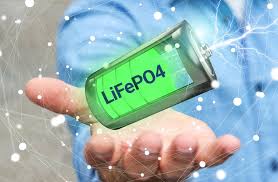Sustainability and Lithium-Ion Batteries: Navigating Environmental Concerns
Lithium-ion batteries have undeniably revolutionized the way we power our devices and vehicles, but as their prevalence grows, so does the scrutiny surrounding their environmental impact. This article delves into the sustainability aspects of lithium-ion batteries, exploring both the challenges and the strategies employed to navigate environmental concerns associated with their production, use, and disposal.

1. Raw Material Extraction and Mining:
- Concerns about Cobalt:
Cobalt, a key component in many lithium-ion batteries, has raised ethical and environmental concerns due to mining practices associated with human rights violations and environmental degradation.
Efforts are underway to reduce the dependence on cobalt by exploring alternative chemistries and materials for cathodes, such as high-nickel formulations.
- Sustainable Mining Practices:
Initiatives promoting responsible mining practices and ethical sourcing of raw materials aim to minimize the environmental and social impacts associated with lithium-ion battery production.
Recycling programs for cobalt and other critical materials are being explored to create a closed-loop supply chain.
2. Battery Manufacturing and Energy Consumption:
- Energy-Intensive Processes:
The manufacturing of lithium-ion batteries involves energy-intensive processes, contributing to greenhouse gas emissions.
The transition to renewable energy sources for manufacturing facilities is a strategy to mitigate the carbon footprint associated with battery production.
- Advancements in Manufacturing:
Research is focused on developing more energy-efficient manufacturing processes and exploring new materials that require less energy to produce.
Investments in automation and streamlined production techniques contribute to reducing energy consumption.
3. Operational Life and Performance:
- Battery Degradation:
Over time, lithium-ion batteries undergo degradation, leading to a reduction in performance and capacity.
Strategies such as advanced battery management systems and optimized charging algorithms are implemented to extend the operational life of batteries.
- Second-Life Applications:
Expanding the concept of second-life applications involves repurposing used batteries for less demanding tasks, such as stationary energy storage for renewable energy systems.
This approach enhances the overall sustainability by maximizing the utility of batteries beyond their initial use in vehicles or devices.
4. End-of-Life Challenges:
- Recycling and Circular Economy:
The recycling of lithium-ion batteries is crucial to recover valuable materials and minimize environmental impact.
Establishing efficient recycling systems and promoting a circular economy where materials are reused helps reduce the demand for new raw materials.
- Emerging Recycling Technologies:
Advanced recycling technologies, including hydrometallurgical and pyrometallurgical processes, are being developed to efficiently recover metals from spent batteries.
These technologies aim to improve the recovery rates of valuable materials while minimizing environmental emissions.
5. Innovations in Battery Chemistry:
- Reducing Dependence on Scarce Materials:
Advancements in battery chemistry, such as high-nickel cathodes and silicon anodes, aim to reduce reliance on scarce materials like cobalt and enhance the sustainability of lithium-ion batteries.
The development of solid-state batteries also holds promise for safer and more sustainable energy storage solutions.
6. Consumer Awareness and Responsible Use:
- Educating Consumers:
Increasing awareness among consumers about the environmental impact of lithium-ion batteries fosters responsible use and disposal.
Encouraging proper disposal methods, such as recycling drop-off points, helps prevent batteries from ending up in landfills.
- Design for Sustainability:
Manufacturers are embracing design principles focused on sustainability, including modular designs that facilitate easier disassembly and recycling.
Eco-labeling and certifications for environmentally friendly products further guide consumers toward sustainable choices.
7. Collaborative Industry Initiatives:
- Industry Collaboration:
Collaborative efforts within the industry involve sharing best practices, research findings, and sustainable technologies.
Industry-led initiatives focus on standardizing recycling processes and developing guidelines for environmentally responsible battery manufacturing.
8. Conclusion: Striking a Balance for a Sustainable Future:
In conclusion, while the widespread adoption of lithium-ion batteries has undeniable benefits for modern technology and clean energy initiatives, addressing environmental concerns is paramount for a truly sustainable future. By tackling challenges across the entire lifecycle of lithium-ion batteries — from responsible raw material extraction to efficient manufacturing, prolonged use, and effective recycling — the industry is navigating towards greater sustainability.
As technology evolves, the emphasis on developing environmentally friendly battery chemistries, optimizing recycling processes, and fostering responsible consumer behavior will be key in striking the delicate balance between technological advancement and ecological preservation. The journey toward sustainability involves a collective commitment from manufacturers, consumers, and policymakers to ensure that the benefits of lithium-ion batteries are harnessed responsibly for generations to come.






